Introduction
The graphic novel Allergic, written by Megan Wagner Lloyd and Michelle Mee Nutter, is a heartwarming story with wonderful characters. As one of the comic book formats, it can be of particular interest to the book’s target audience, parents and children. Allergic tells the story of a pet-obsessed girl named Maggie who is about to get her first puppy, and then she finds out that she is allergic to all animals.
Maggie is still determined to do her best to find the perfect pet, but she still has a lot to do with her family, friends, and herself along the way. Presented by illustrations, the story makes you feel the emotions of the heroes, experience the complex challenges of life with them, and immerse yourself in the plot. The graphic novel wins readers’ hearts by raising important topics, such as how the main characters find themselves close to reality. Therefore, it teaches children how to cope with difficulties.
The plot and its analysis
Turning to the teaser of the novel, presented by a short video, a fascinating plot becomes obvious (Scholastic Reading Guide: Allergic by Megan Wagner Lloyd and Michelle Mee Nutter| Official Book). Maggie feels lonely; her parents are waiting for replenishment in the family, and her younger twin brothers are constantly in their world. However, the girl has a great solution; she wants to have a puppy. On her birthday, Maggie’s parents bring her to an animal shelter.
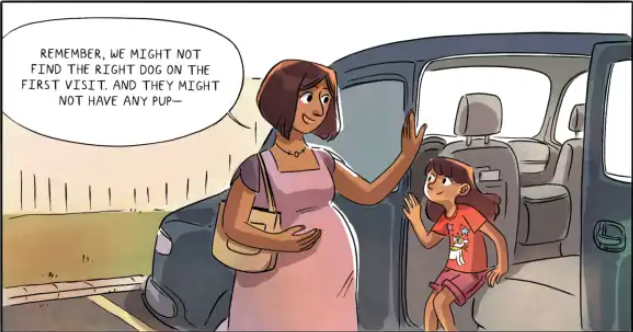
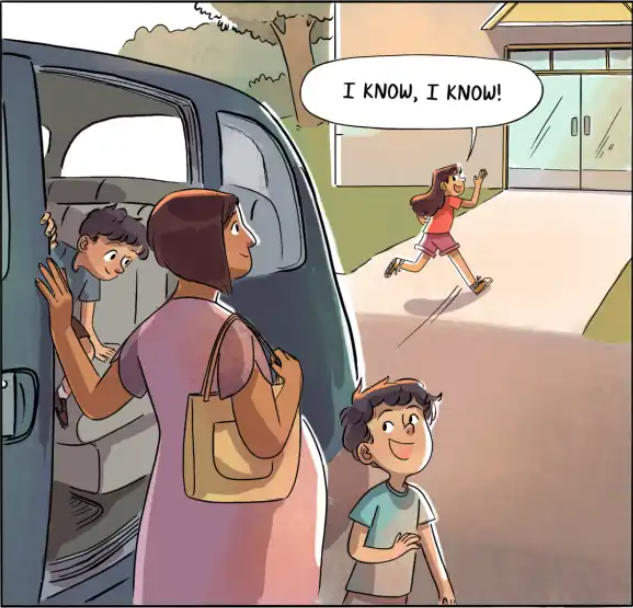
Maggie immediately finds a suitable puppy, but things get complicated when the main character has a severe allergic reaction.
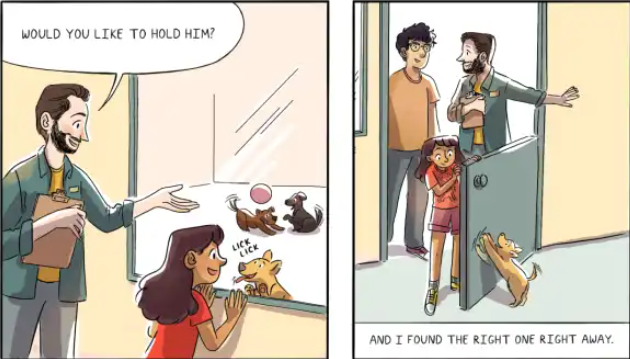
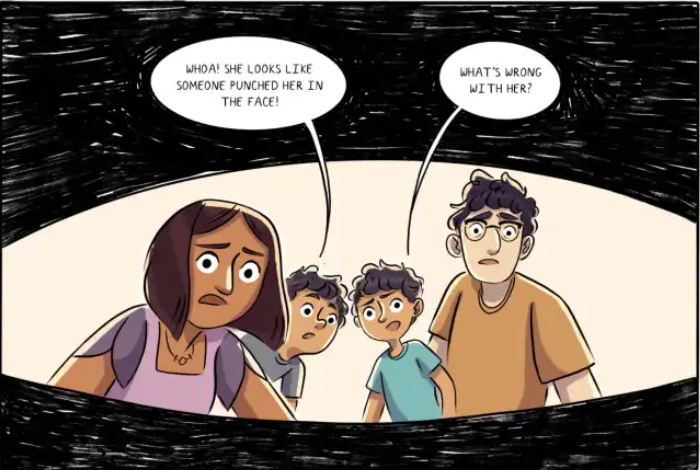
It turns out that Maggie is allergic to everything with fur or feathers, but despite her allergy, Maggie is determined to do everything possible to find an animal that makes her the perfect pet.
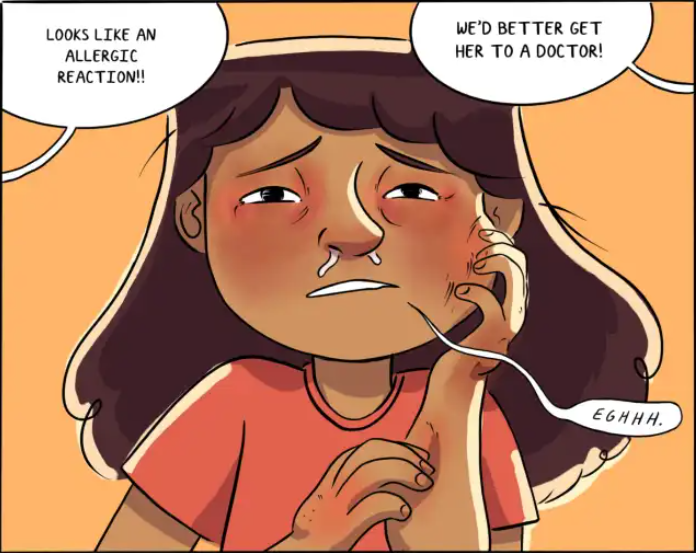
Notable is the way the illustrator conveys the emotions of Maggie and the characters throughout the story. Maggie is completely devastated when the girl realizes that the allergy has deprived her of all chances of ever having her pet. Remaining optimistic, she tries to find a new pet for herself, which is perfectly conveyed due to the graphic visuals (Thomson). In addition, when Maggie’s best friend gets a puppy, Maggie suffers when she sees Claire interacting with what Maggie has long wanted. The significant point of the novel is how allergies are diagnosed. The author transmits help for young readers who undergo allergy shots and various skin tests like Maggie. Particular attention and respect are caused by the character of Sebastian, a schoolboy who also faces allergies. He covers his experience, talks about acute allergic reactions and using medicines. From his story, it is clear that he is wise beyond his years and learned to cope and agree that some things are not available to him due to allergy, and this is normal.
However, Maggie disagrees with this and attempts to drag the mouse into the bedroom and secretly make a furry friend. This plan is not ideal as it backfires as she tries to hide the fact that she has allergic reactions (Lloyd). Maggie’s secret is revealed, and then a touching scene ensues that makes the whole family cry and laugh. The graphic novel combines many themes in addition to the main plot about allergies as the main problem.
Analysis of author comments
Revealing such topics as friendship, a feeling of dissimilarity, the appearance of another child in the family, family relationships, hiding a secret, the author allows young readers to see themselves in the main character. It contributes to finding their place with family and friends (Megan Wagner Lloyd, Michelle Mee Nutter & Gabriela Epstein in Conversation | ALLERGIC). Based on her childhood experiences, the author highlights the issues that worried her as a teenager; it brought personal experience to the story and made it very life-like. Children who find themselves in such a situation may experience negative emotions and worries about the disease and perceive it as spoils life. In contrast, other children rejoice in contact with animals.
Given the increasing incidence of allergies, many children may experience and suffer from them on a daily basis. The key to this story is how Maggie behaves, feels, and copes with all of Maggie’s difficulties, how she struggles with all the changes and gets out of these situations much stronger. The author does an amazing job balancing difficult moments with entertaining adventures (Megan Wagner Lloyd & Illustrator Michelle Mee Nutter on ALLERGIC). So this book is the embodiment of the emotional truths and problems of allergies and adolescence in the most exciting and profound ways.
The authors of the novel note that the book can be helpful to middle-grade readers since children of this age are constantly faced with a considerable number of changes. They happen at home, at school, among their friends and families, and even in their bodies and their changing perception of themselves. “Allergic is a story of adapting” to these rapidly changing circumstances and ultimately finding resilience and joy. (Dumleton) The graphic novel’s format brings rich visual storytelling to the page. Illustrator’s art shows funny and emotional moments, turning them into a story that will make one laugh and cry. It can be noted that illustrations are effective for providing information to the target audience. The format makes the novel unique since the main plot is conveyed through the drawing, which attracts the reader. Especially for children, this option of presenting information may be preferable to a regular book. The graphic novel has a unique way of reaching out to a person’s heart, as in this case.
Evaluation criteria
The criteria for assessment can be used to highlight the usefulness, the importance of ideas, the brightness of the transmission, the power of influence on the reader, human value, and persuasiveness. All this is present in one way or another in the analyzed source. The authors show how environmental allergy shots work, what it feels like to miss out on allergies, and how you feel like a person, a teenager when their allergies affect others. Novel can help those with allergies feel understood and help those who are not allergic to empathize.
It is crucial, as the author shows the friendship between Claire and Maggie, in the apparent contrast of family situations; the girls find a common language. The writer emphasizes that she wanted to show two children who are kind-hearted and caring for each other but still have to overcome some misunderstandings, mistakes, and disappointments, just like in real life. The richness and thoughtfulness of the whole story are observed; a sincere novel evokes emotions, makes one empathize with the characters, and want to reread the book repeatedly.
Conclusion
The graphic novel about a severely allergic child is a book that does not shy away from the sheer complexity of the situation while slowly moving towards well-deserved optimism. Thought out, touching, and charming, the book is already capturing people’s hearts. Considering the expressive and unassuming illustrations with a light and soft color palette, the author raises topics that are relevant and useful to people. Allergic can be recommended for reading not only for children but also for adults; there is something to learn from the analyzed work.
Works Cited
“Megan Wagner Lloyd & Illustrator Michelle Mee Nutter on ALLERGIC.” Reading Middle Grade, 2021, Web.
“Megan Wagner Lloyd, Michelle Mee Nutter & Gabriela Epstein in Conversation | ALLERGIC.” YouTube, uploaded by The Novel Neighbour, 2021, Web.
“Scholastic Reading Guide: Allergic by Megan Wagner Lloyd and Michelle Mee Nutter| Official Book.” YouTube, uploaded by Back to School Ideas, 2021, Web.
Dumleton, Elise. “Cover Reveal: ‘Allergic’ by Megan Wagner Lloyd & Michelle Mee Nutter.” The Nerd Daily, 2020, Web.
Lloyd, Megan Wagner. Allergic: A Graphic Novel. Scholastic Incorporated, 2021.
Thomson, Lisa. “Pet Project.” The New York Times, 2021, Web.